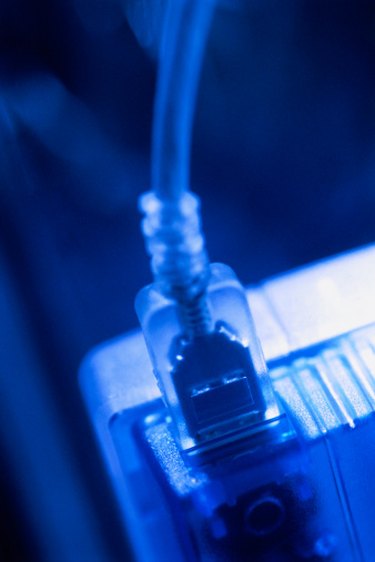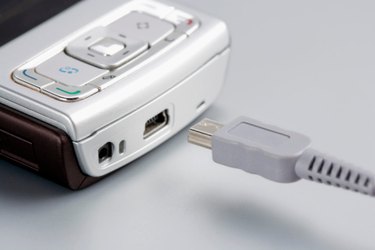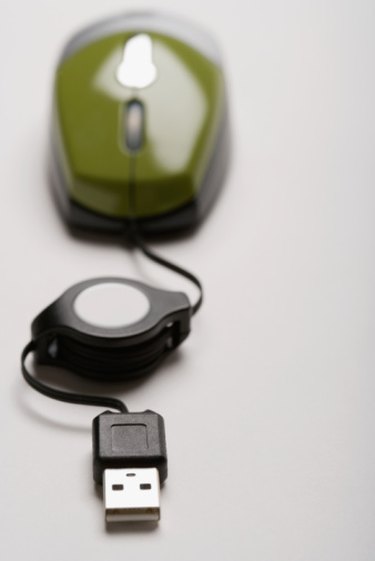
"USB" refers to Universal Serial Bus, which is a type of connection used to link computers to peripheral devices. USB ports are found on both the computers and the devices, and USB cables connect them to each other. USB ports function as both input and output ports. There are two types of USB ports, Type A and Type B, and information can go both directions on either one.
USB Type A
Video of the Day

Type A USB connectors are rectangular and plug into fitting ports. These ports are always on "host" devices such as a computer.
Video of the Day
USB Type B

Type B USB connectors are small and square and plug into fitting ports. These ports are always on peripheral devices like printers or keyboards.
Upstream and Downstream
Instead of "input" and "output," the proper terms to describe USB connections are "upstream" and "downstream." Type A connections are upstream because they are located at the main power and information source. Type B connections are downstream. Note that communications can go both ways. A computer can communicate with an input device like a keyboard or an output device like a printer with the same port.
Other USB Characteristics

Most USB cables have a Type A connector at one end and a Type B connector at the other. Some have Type A connectors at both ends, but these should only be used to connect two computers if you know what you are doing. Some devices may require USB adapters, such as those with wireless capabilities. Other devices have no Type B port but have USB cables connected directly to them that plug into computer ports.